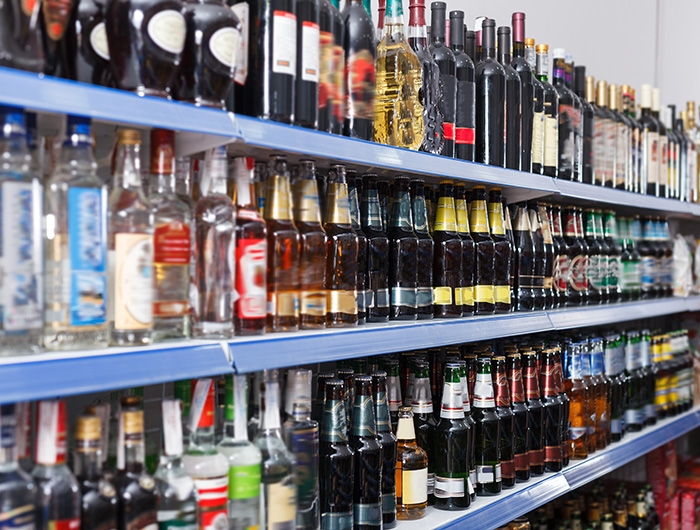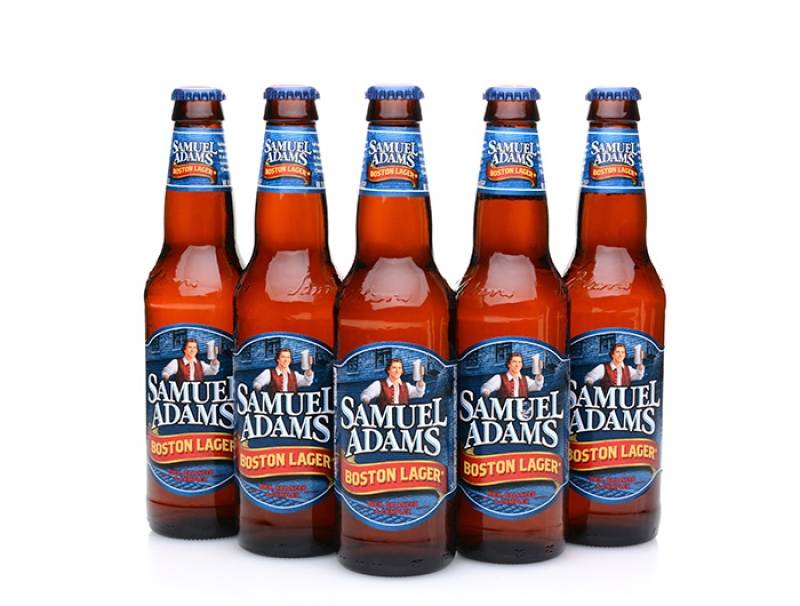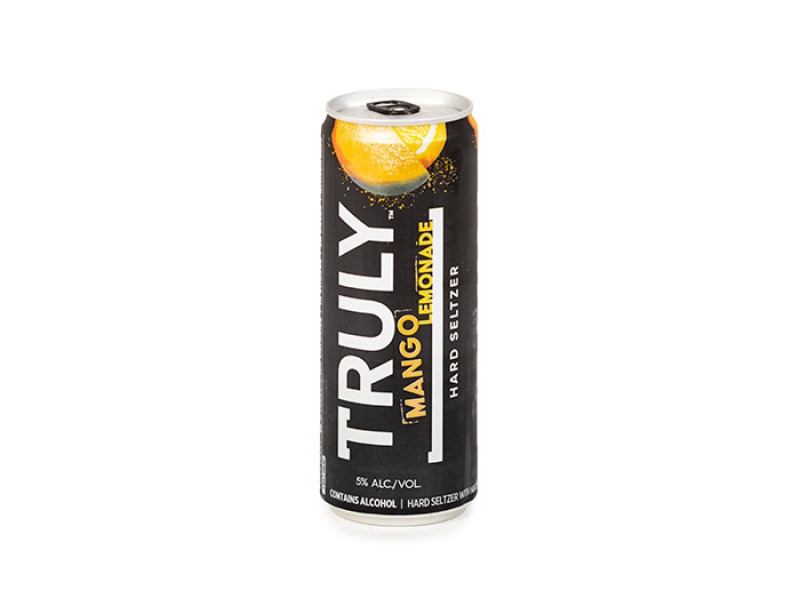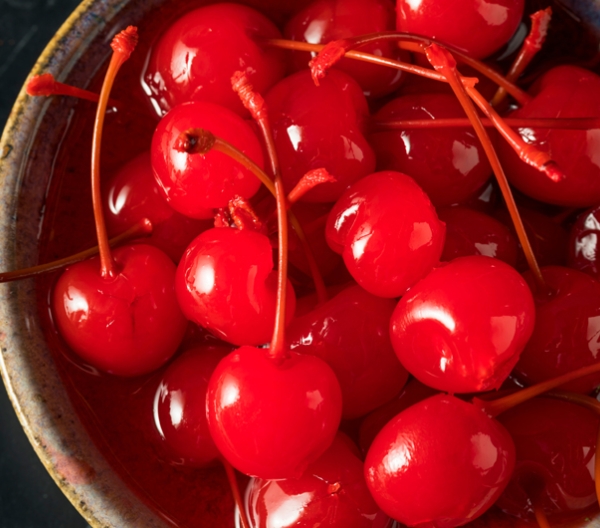Why alcohol labels should have nutrition and allergen info

JackF - stock.adobe.com
Currently, manufacturers are not required to put nutrition information on alcoholic beverage containers. Here’s why CSPI is calling for mandatory alcohol labeling and raising red flags about concerning alcohol marketing practices.
Why don’t all alcoholic beverages have nutrition labels?
Overconsumption of alcohol is a costly public health problem that has become much worse in recent years, as alcohol-related deaths have risen substantially. Among the key concerns, alcoholic beverages are involved in about 30 percent of all traffic crash fatalities in the US, and excessive drinking increases the risk of liver disease, hypertension, cardiovascular disease, alcohol use disorders, certain cancers, and severe injuries. Additionally, alcoholic beverages are sources of empty calories that contribute to obesity and can impact blood sugar control in people with diabetes.
Alcohol labels are not universally required to contain information like the number of standard drinks per container that would make it easier for consumers to drink in moderation. Also, calories, ingredients, and nutrition information are not currently required to be labeled on all alcoholic beverages. Like other foods and beverages, alcoholic beverages contain various ingredients and additives that consumers may need or want to avoid for health, safety, religious, or other reasons. This is particularly true for the millions of Americans with food allergies, for whom labeling can be a life-or-death matter.
So why does alcoholic beverage packaging lack this key information?
Alcohol regulation largely falls outside FDA’s jurisdiction
Unlike other foods and beverages, which are regulated by the Food and Drug Administration (FDA), most alcoholic beverages are regulated by the Treasury Department’s Alcohol and Tobacco Tax and Trade Bureau (TTB), which does not require comprehensive labeling. That’s why consumers can’t tell from the label how many calories or what ingredients are in a Samuel Adams Boston Lager.

Photo: Louise Shumbris-Cukrov - stock.adobe.com
But, a Truly Hard Seltzer, which is made by the same company (Boston Beer Co.) and has the same alcohol by volume as a Samuel Adams Boston Lager (5% ABV), must list calories, ingredients, and other nutritional information because it is one of the relatively few alcoholic products that falls under FDA regulation.

Photo: Sean Locke - stock.adobe.com
Addressing the gaps in alcohol labeling
In 2003, CSPI and a coalition of dozens of other organizations and individuals petitioned TTB to fix this flawed system. But, more than two decades later, TTB is still dragging its feet. Instead of mandatory labeling policies, the Treasury Department has put in place a voluntary system that allows companies to place nutrition and allergy information on their products if they so choose. CSPI’s analysis of implementation of these voluntary labeling policies found that top wine and beer companies have low levels of uptake of these labels, underscoring the need for mandatory labeling.
After years of inactivity on the petition, CSPI, the Consumer Federation of America, and the National Consumers League sued the Treasury Department to compel a decision on mandatory alcohol content, calorie, ingredient, and allergen labeling. Specifically, the coalition argued that TTB violated the Administrative Procedure Act by not responding to the petition within a reasonable time frame.
In November 2022, TTB sent a letter to the plaintiffs in the lawsuit in which it agreed to issue proposed rules requiring standardized alcohol content, nutrient, ingredient, and allergen labeling on all alcoholic products under its jurisdiction. TTB stated its intention to publish three proposed rulemakings on nutrition, ingredients, and allergen labeling before the end of 2023, but the Department has not yet issued the rules.
Accordingly, in a letter on February 27, 2024, CSPI and a coalition of consumer and health groups urged Treasury Secretary Janet Yellen to ensure that TTB keeps its commitment to require standardized alcohol labeling on all beer, wine, and distilled spirits products by initiating the promised rulemakings.
Public listening sessions on alcohol labeling
This latest appeal comes as TTB began a series of “listening sessions” on labeling and advertising of alcoholic beverages on February 28-29, 2024. Raising concerns that the listening sessions are no more than a delay tactic to maintain the status quo and “slow walk deliberations for months,” the coalition of public health organizations called for TTB to publish the proposed rulemakings by June 2024.
CSPI’s oral testimony at the listening sessions urged TTB to prioritize transparency and health over corporate interests as it drafts its rulemakings, and to delay no further in issuing proposed mandatory alcohol labeling rules.
In March 2024, CSPI also submitted a written comment and built a coalition of 34 organizations and individuals who signed onto a coalition comment urging TTB to swiftly issue proposed rulemakings for mandatory labeling of alcohol content, nutritional information, major allergens, and ingredients.
Other concerns in alcohol marketing
The lack of mandatory nutrition labeling is far from the only concern related to alcohol marketing. Alcoholic beverage manufacturers have used a slew of troubling marketing practices that CSPI is working to address.
Juice and soda brands venturing into alcohol
With the explosion of the hard seltzer, hard soda, and specialty malt beverage markets starting in 2019, some brands that traditionally make non-alcoholic beverages have ventured into making alcoholic products. Mountain Dew, SunnyD, and Simply are just a few examples of well-known non-alcoholic beverage brands that recently introduced their first alcohol products. Like hard seltzers, these products typically contain about five percent alcohol and are often marketed as healthier, low-sugar, and/or fruit-flavored beverages.
Labeling of these new alcoholic products often contains the words “hard” or “spiked” and an alcohol percentage disclosure, but is otherwise similar—or in some cases, nearly identical—in layout and design to their non-alcoholic counterparts. The recognizable packaging combined with fruit flavoring, bright colors, and lower sugar and calorie content seems to target younger consumers like Gen Z (who industry experts believe prefer low-calorie, fruit-flavored alcoholic beverages). Concerningly, this could attract underage drinkers or pose a risk of confusion for consumers who perceive the product as non-alcoholic because of label similarities.
Some states have taken action to ensure these products aren’t misleadingly marketed in stores. But further action by TTB, the FDA, or the Federal Trade Commission could help to address the issue by highlighting misleading marketing practices, as well as by deterring alcohol manufacturers from seeking to attract youth through marketing tactics.
Dubious claims and the power of consumer advocacy
Some alcoholic brands have made misleading nutrition claims about their products, a concerning practice that CSPI has worked to address. Take, for example, the case of Vizzy Hard Seltzer. One advertisement for Vizzy claimed that Vizzy is the “first hard seltzer made with antioxidant vitamin C from acerola superfruit”; another ad distinguished it from its competitors by stating, “Yeah, but we’ve got the antioxidant vitamin C.” At one point, Vizzy’s label indicated that each can contains 18 milligrams of vitamin C, or 20 percent of the Recommended Daily Intake of the vitamin, because its last ingredient is dried acerola cherry juice.
This is misleading because it implies that an alcoholic beverage is a healthful source of vitamin C. However, consumers should be getting their vitamins from foods, or multivitamins and supplements if necessary—not alcohol. And according to the FDA’s own fortification policy, manufacturers should not add vitamins or minerals to alcoholic drinks.
CSPI, along with the Consumer Federation of America, sent a letter to the FDA urging the FDA to take enforcement action against Molson Coors Beverage Company, the manufacturer of Vizzy Hard Seltzer. The letter argued that making claims on FDA-regulated alcoholic beverages based on the presence of nutrients added through fortification is illegal under FDA rules.
Eventually, public concern over Vizzy culminated in a class action lawsuit in California against Vizzy’s deceptive practices. Molson Coors decided to settle the lawsuit and agreed to compensate consumers and stop using deceptive labels on Vizzy.
The case of Vizzy demonstrates one possible avenue of change in the world of alcohol marketing: the power of consumer-centered advocacy in spurring class action lawsuits that can encourage positive shifts in deceptive marketing practices.
How you can help
You can voice your concern about the need for better alcohol labeling by sending a comment to TTB calling for nutrient, calorie, allergen, alcohol content, and ingredient labeling on all alcohol beverage containers. You can also support CSPI’s ongoing efforts to ensure a safer, healthier, and more transparent food system through consumer-focused advocacy.
Tell regulators: Alcoholic beverages need comprehensive, on-package labeling

Stirring the Pot
Join the fight for safer, healthier food
Sign up to receive action alerts and opportunities to support our work in Stirring the Pot, our monthly newsletter roundup.

